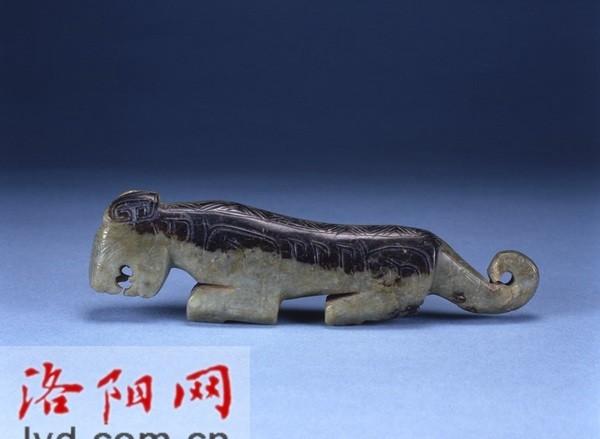"Taimu is my house, and Mengmen is my neighbor." The hundred beasts eat for me, and the five dragons serve me. The Tang Dynasty poet Chu Guangxi wrote in just a few sentences the momentum of the tiger, the king of the hundred beasts, in the "Words of the Tiger". Animals in the eyes of the ancients, in addition to biological attributes, were also endowed with rich and profound symbolic significance. On the mainland, tiger culture is almost as old and influential as dragon culture. The Lunar Year of the Tiger is coming, let's go to the museum to find cultural relics related to tigers and feel the traditional culture imprinted on them!
● Western Zhou Yuhu

This jade tiger is now in the Luoyang Museum, excavated in 1964 from the Beiyao Western Zhou Tomb, 16.4 cm long and 4.9 cm high. The relics use round carving techniques, the tiger is curled up on all four legs, the head is drooping, grinning ears, the tail is rolled up, and the body is engraved with exquisite patterns, representing the superb jade carving process of the Western Zhou Dynasty. Luoyang Museum docent introduced that the best thing about the jade tiger is that the selection of materials is just right, the ears, neck and back of the tiger are black, the head, tail, abdomen and legs are cyan, the creator will be the variegated color of the jade and the shape of the tiger skillfully combined, increasing the realism of the tiger, a few knives will portray the tiger's appetite dynamics, fully display the tiger's ferocity, might.
● Northern Wei Shihu
Unearthed in 1980 at the Jing Mausoleum of Emperor Xiaozhuang of the Northern Wei Dynasty, this artifact is one of the few surviving Relics of the Northern Wei Emperor's Shinto And is currently in the Luoyang Museum. Shi Hu is 106 cm tall, with a solid posture and a solemn face, with upright forelimbs, crouched hind limbs, and a tail curled up against the back, which is an outstanding representative of the Northern Wei stone carving.
● Han painted tiger pattern pottery Fangyi
奁 is an ancient box containing toiletries. This piece of Pottery Fangyuan is a collection of the Luoyang Museum, excavated in 1985 in the Han Tomb of the Dairy Factory, the upper part is decorated with brownish red thick lines decorated with clouds, and the bottom two rectangles have a red painted tiger, the tiger is running, the long tail is upturned, and the wind is majestic.
● Qing painted Zhao Gongming riding a tiger wood carving statue
The statue is a collection of the Luoyang Folk Customs Museum, using circular carving techniques and decorated with painted paintings, reflecting the beautiful vision of people avoiding evil and praying for blessings. Zhao Gongming is one of the gods in charge of the source of wealth in folklore, in the statue he wears an iron crown, wears armor, thick beard, black face, angry eyes, holding the yuan treasure in his left hand on his chest, holding an iron whip in his right hand on the top of his head, sitting on the side of the tiger's back; the black tiger stands upright on his side, the left side of the tiger's head, the eyeballs are prominent, the tail is erect, and the overall image is majestic and brave. (Luo Bao Rong Media Luoyang Network reporter wisdom correspondent Wei Wei Zhang Filling Jing text/photo)